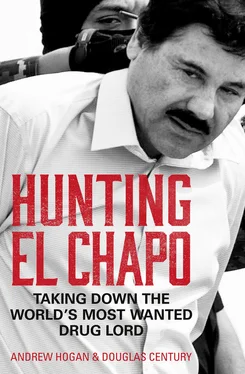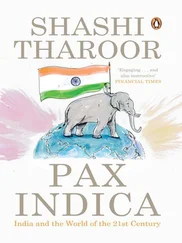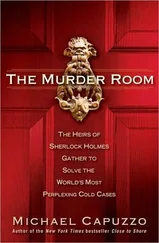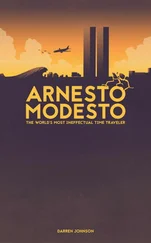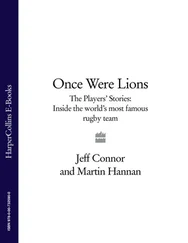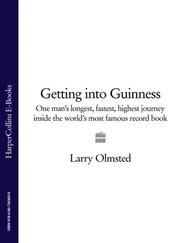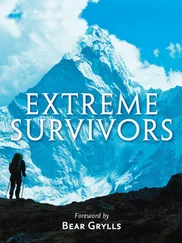It was astonishing how Diego owned the room. Not with his size—he was no more than five foot five—but with his confidence and charm. I noticed one of the dancers flirting with him, even while she was whirling around with her cowboy-boot-wearing partner. Diego wasn’t a typical T-shirt-and-baggy-jeans narcotics cop—he’d often dress in a pressed collared shirt whether he was at home or working the streets.
Diego commanded respect immediately whenever he spoke—especially in Spanish. He was born on the outskirts of Mexico City, came to Tucson with his family when he was a kid, and then moved to Phoenix and became a patrolman with the Mesa Police Department in 2001. Like me, he earned a reputation for being an aggressive street cop. Diego was so skilled at conducting drug investigations that he’d been promoted to detective in 2006. One year later, he was hand-selected by his chief for an elite assignment to the DEA Phoenix Narcotic Task Force Team 3. And that was when I met him.
From the moment Diego and I partnered up, it was clear that our strengths complemented one another. Diego had an innate street sense. He was always working someone: a confidential informant, a crook—even his friends. He often juggled four cell phones at a time. The undercover role—front and center, doing all the talking—was where Diego thrived. While I loved working the street, I’d always find myself in the shadows, as I was that night, sitting at our table, taking mental note of every detail, studying and memorizing every face. I didn’t want the spotlight; my work behind the scenes would speak for itself.
Diego and I had just started targeting a Phoenix-based crew of narco juniors suspected of distributing Sinaloa Cartel cocaine, meth, and large shipments of cajeta —high-grade Mexican marijuana—by the tractor-trailer-load throughout the Southwest.
Though we weren’t planning to engage the targets that night, Diego was dressed just like a narco junior, in a black Calvin Klein button-down shirt, untucked over midnight-blue jeans, and a black-faced Movado watch and black leather Puma sneakers. I looked more like a college kid from California, in my black Hurley ball cap, plain gray T-shirt, and matching Diesel shoes.
My sons are my joy and my sadness , I repeated to myself silently. This most popular of the current narcocorridos—Roberto Tapia’s “El Niño de La Tuna”—packed a lot of emotional punch in its lyrics. I could see the passion in the eyes of the crowd, singing along word for word. It seemed to me that they viewed El Chapo as some mix of Robin Hood and Al Capone.
I looked over and nodded at Diego as if I understood fully, but I really had no clue yet.
I was a young special agent from Kansas who’d grown up on a red-meat diet of Metallica, Tim McGraw, and George Strait, and it was a lot to take in that first night with Diego in Mariscos Navolato.
Up on the five flat-screen TVs, a big Mexican Primera División soccer match was on—Mérida was up 1–0 against Querétaro, apparently, though it meant little to me. The CD jukebox was filled with banda and ranchera, the walls covered in posters for Modelo, Tecate, Dos Equis, and Pacifico, homemade flan, upcoming norteño concerts, and handwritten signs about the mariscos specialties like almeja Reyna , a favorite clam dish from Sinaloa.
“El Chapo”? Was “Shorty” supposed to be a menacing -sounding nickname? How could some semiliterate kid from the tiny town of La Tuna, in the mountains of the Sierra Madre—who’d supported his family by selling oranges on the street—now be celebrated as the most famous drug lord of all time? Was Chapo really—as the urban legends and corridos had it—even more powerful than the president of Mexico?
Whatever the truth of El Chapo, I kept my eyes glued to the narco juniors sitting at a table near the far end of the bar. One had a fresh military-style haircut, two others fauxhawks, the fourth sporting an Arizona State University ball cap. Diego and I knew they were likely armed.
If the narco juniors went out to their cars, we’d have to follow.
Diego tossed two $20 bills on the table, winked at the waitress, and rose from his seat. Now the crew shifted in their seats, one getting to his feet, fixing the brim on his cap, pivoting on the sole of his Air Jordans like a point-guard.
Diego downed the last gulp of his Pacifico and gestured for me to do the same. The band was blaring louder now; Diego laughed, along with the entire bar, hitting the crescendo of the song:
I may be short, but I’m brave...
And I began to grin, too, as I slid my chair back and stood up. The hypnotic rhythm took hold; I found myself singing with as much gusto as any of these cowboy-hat-clad traffickers: “Yo soy El Chapo Guzmán!”

BREAKOUT
GUADALAJARA, MEXICO
May 24, 1993
THE SUDDEN BURST OFAK-47 gunfire pierced the calm of a perfect spring afternoon, unleashing panic in the parking lot of the Guadalajara Airport. Seated in the passenger seat of his white Grand Marquis, Cardinal Juan Jesús Posadas Ocampo, the Archbishop of Guadalajara, was struck fourteen times as he arrived to meet the flight of the papal nuncio. The sixty-six-year-old cardinal slumped toward the center of the vehicle, blood running down his forehead. He had died instantly. The Grand Marquis was riddled with more than thirty bullets, and his driver was among six others dead.
Who would possibly target the archbishop—one of Mexico’s most beloved Catholic leaders—for a brazen daylight hit? The truth appeared to be altogether more prosaic: it was reported that Cardinal Posadas had been caught up in a shooting war between the Sinaloa and Tijuana cartels, feuding for months over the lucrative “plaza”—drug smuggling route—into Southern California. Posadas had been mistaken for the leader of the Sinaloa Cartel, Joaquín Archivaldo Guzmán Loera, a.k.a. “El Chapo,” who was due to arrive at the airport parking lot in a similar white sedan at around the same time.
News footage of the Wild West–style shoot-out flashed instantly around the world as authorities and journalists scrambled to make sense of the carnage. “Helicopters buzzed overhead as police confiscated about 20 bullet-riddled automobiles, including one that contained grenades and high-powered automatic weapons,” reported the Los Angeles Times on its front page. The daylight assassination of Cardinal Posadas rocked Mexican society to its core; President Carlos Salinas de Gortari arrived immediately to pay his condolences and calm the nation’s nerves.
The airport shoot-out would prove to be a turning point in modern Latin American history: for the first time, the Mexican public truly took note of the savage nature of the nation’s drug cartels. Most Mexicans had never heard of the diminutive Sinaloa capo whose alias made him sound more comical than lethal.
After Posada’s assassination, crude drawings of Chapo’s face were splashed on front pages of newspapers and magazines all across Latin America. His name appeared on TV nightly—wanted for murder and drug trafficking.
Realizing he was no longer safe even in his native Sierra Madre backcountry, or in the neighboring state of Durango, Guzmán reportedly fled to Jalisco, where he owned a ranch, then to a hotel in Mexico City, where he met with several Sinaloa Cartel lieutenants, handing over tens of millions in US currency to provide for his family while he was on the lam.
In disguise, using a passport with the name Jorge Ramos Pérez, Chapo traveled to the south of Mexico and crossed the border into Guatemala on June 4, 1993. His plan apparently was to move stealthily, with his girlfriend and several bodyguards, then settle in El Salvador until the heat died down. It was later reported that Chapo had paid handsomely for his escape, bribing one Guatemalan military officer with $1.2 million to guarantee his safe passage south of the Mexican border.
Читать дальше
